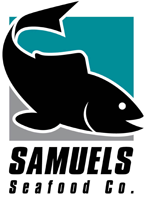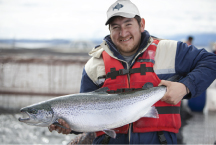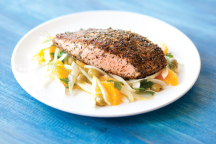Atlantic Salmon by Verlasso
Common Names: Salmon, Atlantic Salmon
AVAILABILITY Fresh
SEASONAL AVAILABILITY
Available Year Round
CATCH and COUNTRY of ORIGIN
Sutainable Farmed Raised
Patagonia, Chile
SIZING
Whole Fish
Hand Carved Half Side Fillets
Cut to Size Portions
FLAVOR PROFILE
Clean, oily flavor with medium texture and medium flake. High fat content. Raw flesh is light to dark orange and cooks up light pink.
COOKING TECHNIQUES
Grilling, Roasting, Broiling, Pan Searing, Frying, Steaming, Poaching, Smoking, Ceviche, Crudo.
PRODUCT INFO
Verlasso is the First Farmed Raised Salmon to be Approved by the Monterey Bay Aquarium as a “Good Alternative”
• We use 75% fewer wild-caught feeder fish
• The salmon’s ocean home is pollutant-free
• Our fish have lots of room to grow
• Harvest is always done humanely
• We never use hormones
• We don’t use preventative antibiotics
• We can trace every fish back to the egg
• We give the environment a break
• Our focus is harmony with nature
• We are the future of fish farming
According to the USDA’s 2010 Dietary Guidelines, we should consume at least 8 ounces of seafood per week to increase our overall wellness and improve heart health. That’s more than twice the current average intake of 3.5 ounces. Verlasso Salmon is a wonderful way to meet this recommendation.
Salmon is considered a nutritional “superfood” for its many health benefits. Supportive but not conclusive research shows that consumption of EPA and DHA omega-3 fatty acids may reduce the risk of coronary heart disease. One serving of Verlasso salmon provides about 3.5 grams of EPA and DHA omega-3 fatty acids. Salmon is also an excellent source of protein and contains 75% less saturated fat than a steak.
The USDA also recommends that women who are pregnant or breast feeding eat up to 12 ounces of seafood every week to increase their intake of omega-3 fatty acids, for their own health and their babies’ health.
Benefits of Omega-3
You’ve probably heard about the importance of mega-3 fatty acids in your diet. The two most important types of omega-3s are EPA and DHA. What you might not know is that our ability to produce these two fatty acids is limited. We get most of our EPA and DHA directly from what we eat, including salmon. Salmon, in turn, get their omega-3s from what they eat. Consuming 8 ounces of seafood per week increases your intake of both EPA and DHA.








